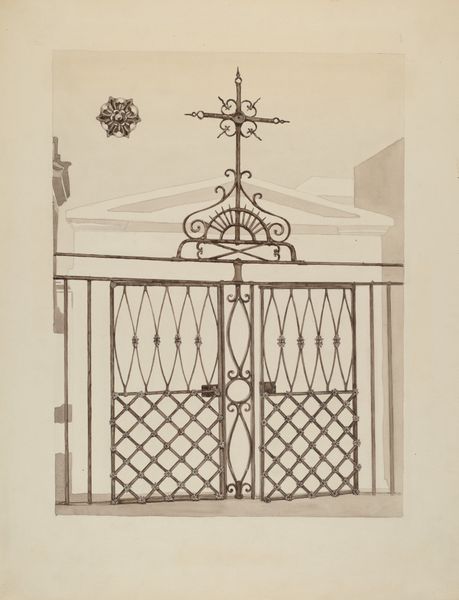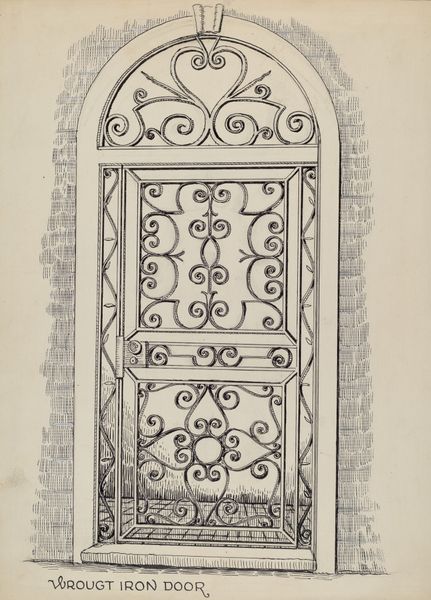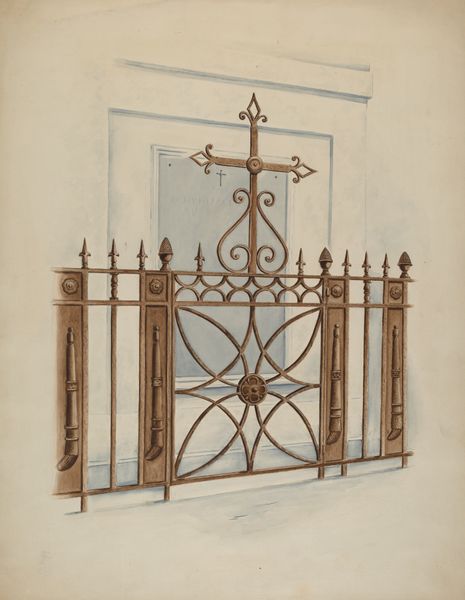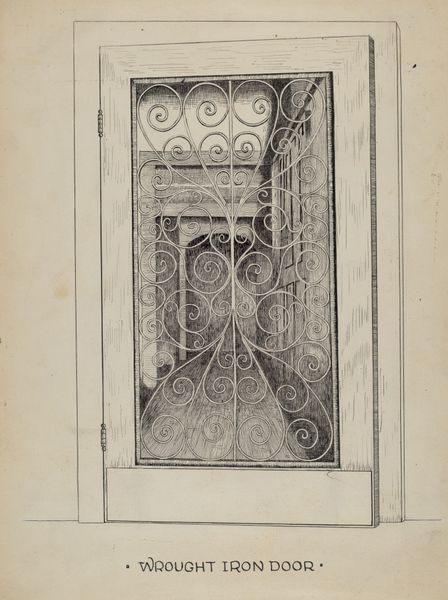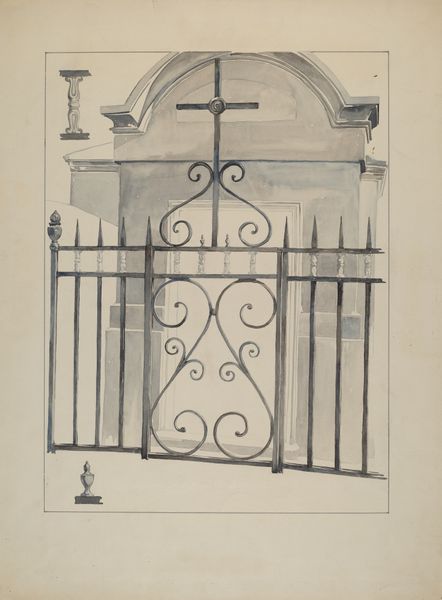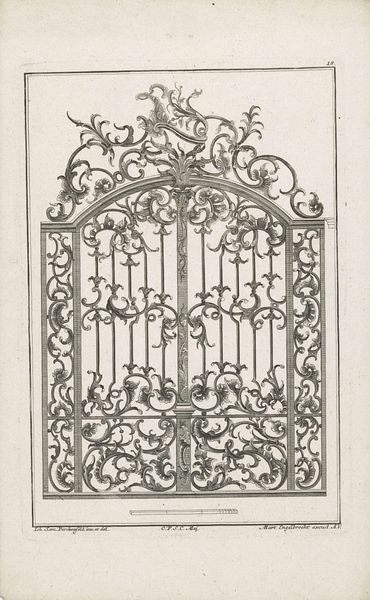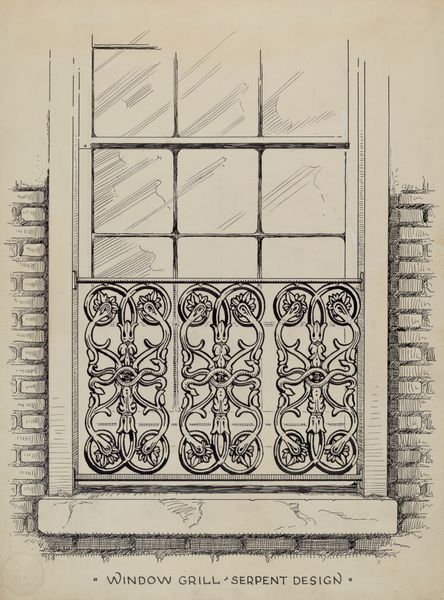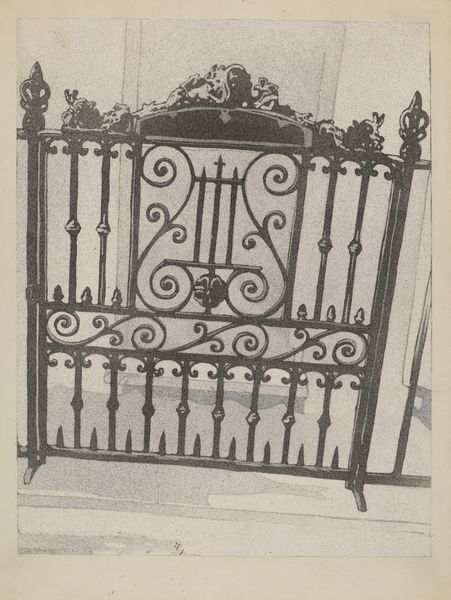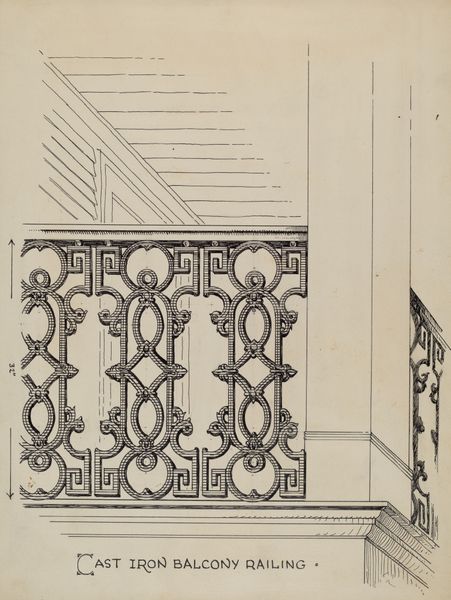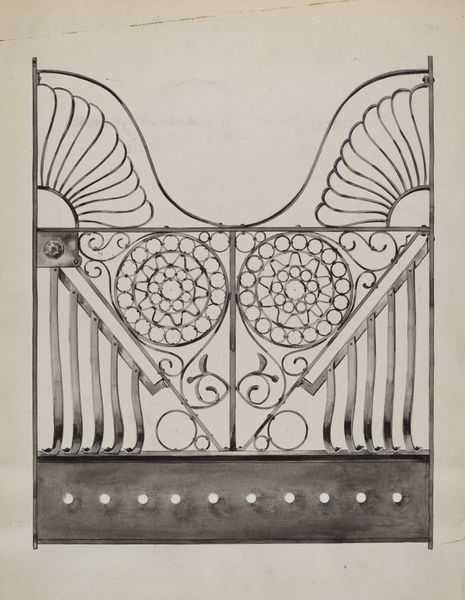
drawing, metal
#
drawing
#
metal
#
geometric
#
realism
Dimensions: overall: 30.5 x 23 cm (12 x 9 1/16 in.)
Copyright: National Gallery of Art: CC0 1.0
Curator: Alright, let's talk about this intriguing image titled "Iron Gate and Fence," dating from around 1936. It's rendered as a drawing but depicts… well, an iron gate and fence. Editor: Instantly, I get this sense of quiet, contained beauty. It's almost melancholy. All those carefully wrought shapes, holding… what? And those finials feel very sharp, aggressive even. I wonder what story this gate is guarding. Curator: Good question. The date places this work squarely within the interwar period, a time of immense social and political upheaval. Consider the symbolism of boundaries—of what's included and excluded. The ironwork, while decorative, speaks to divisions of class, power and protection. Editor: Yes! The swirls are almost whimsical but the spiky points are foreboding, a very precise study in contrasts. What initially appears pretty becomes subtly sinister. It gives you pause about the hidden story here, about all that hidden by it. Curator: The medium is also interesting here, drawing as opposed to, say, a photograph. Does the artist mean to give it an antiquated sensibility? Ironwork was also becoming industrialized in some areas. It poses a sharp contrast to traditional handmade, decorative work and to a vision of more modern barriers, perhaps built for wartime purposes. Editor: I think that that choice really softens the subject somehow. It’s like taking a brutal thing and making it more humane. Like seeing something sharp and dangerous that wants to be loved. Almost the opposite effect of what photography would have offered, perhaps? Curator: That’s quite a thought, a softness mitigating brutality. It challenges the straightforward narrative of societal division. The composition, almost aggressively frontal and realistic, dares us to question those established narratives further. Editor: It’s true, and that ambiguity…it's why this piece sticks with me. There’s a sense of wanting more. And just where that "more" is…we get to write some of it ourselves. I can just hear a dark poetry ringing behind this silent depiction. Curator: Well said, truly. The dialogue the work evokes underscores the role of public imagery, of constructed meaning that serves power yet can be reclaimed for critique. This humble iron gate becomes, through artistic interpretation, a site of contemplation about social orders. Editor: Indeed. It's an image that lingers, reminding us that even in the stoniest barriers, there are always threads of beauty, of question, and dare I say it... of hope.
Comments
No comments
Be the first to comment and join the conversation on the ultimate creative platform.
